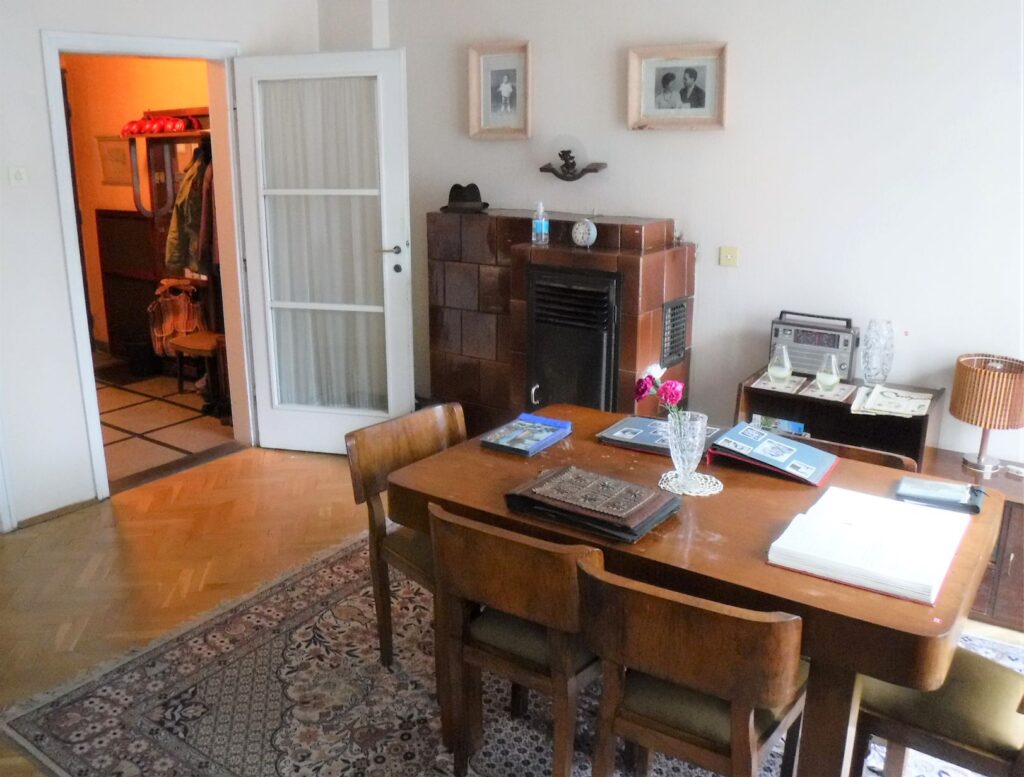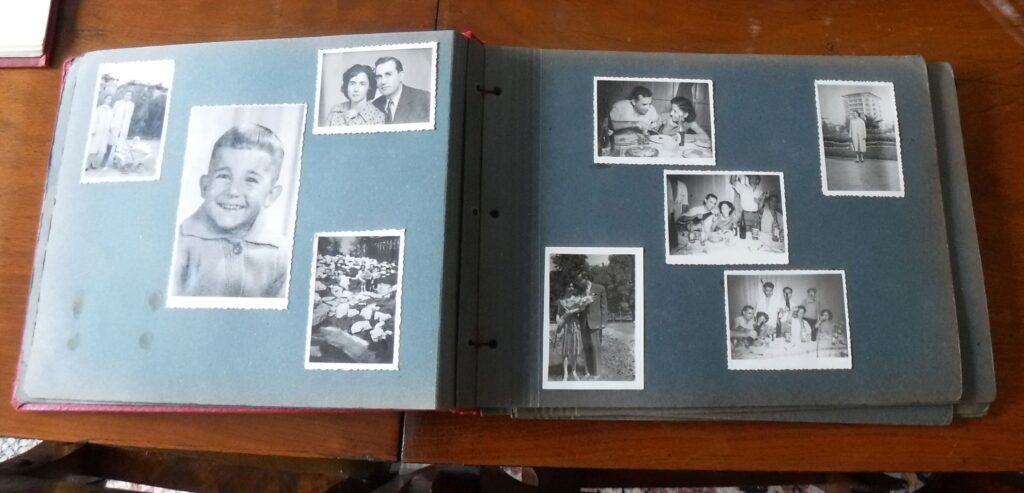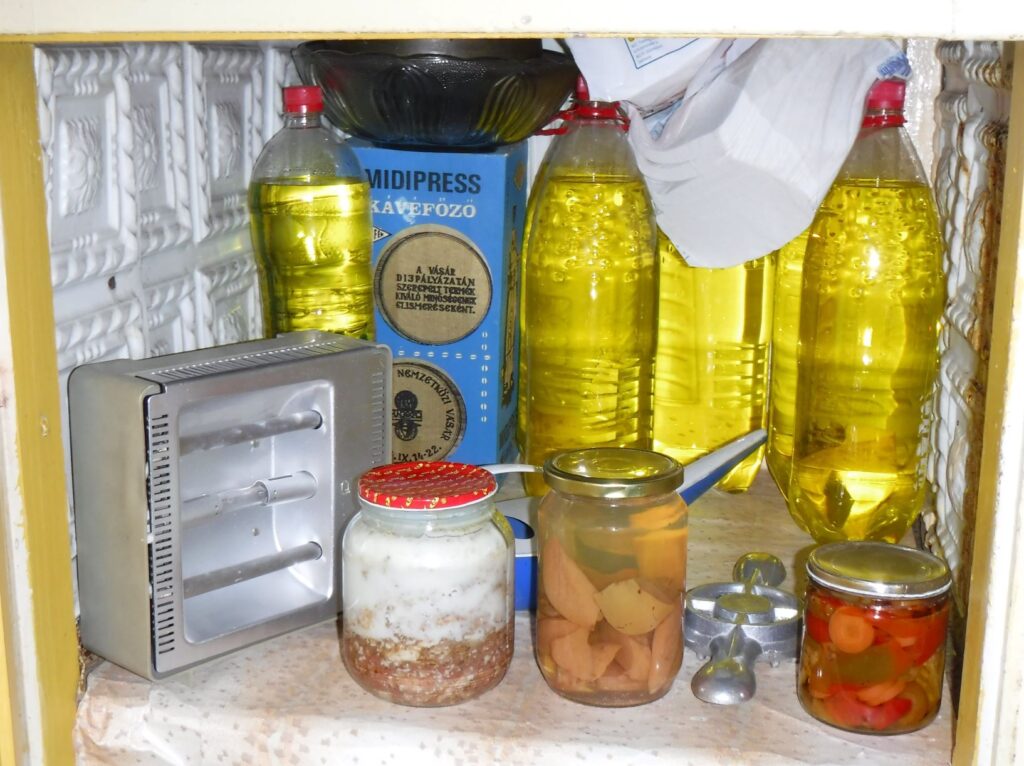A glimpse into Bulgaria’s communist past
Close to the centre of Sofia, in an ordinary, non-descript housing block, is a unique time capsule. The Red Flat is an apartment that has been set up to replicate a family residence typical of 1980s urban Bulgaria. I went along for a look, and found unique museum providing a fascinating insight into life in communist Bulgaria.
After buying my ticket at a shop around the corner, I buzzed the Red Flat from the street side intercom at the entrance to the apartment block. A voice welcomed me and told me to come up. I climbed the steps, a door opened, and a staff member in an anti-Covid-19 face mask asked me in. She supplied me with headphones and an Mp3 player, and explained that I was welcome to pick up, open, and investigate anything I liked within the flat.

The Mp3 held over 40 short stories about daily life within the family unit, what was happening at a local, regional and national scale, and the geopolitical situation under which all of this unfolded.
Young Nikolay dreaded dreary Sunday afternoons at his grandparent’s house
The museum stories were told through the characters of a fictional family, Mum and Dad and one son, who ‘lived’ in the flat. Although the museum had been put together with articles from a variety of sources, you really did get the feeling that you had entered a family’s private space. Wedding photos on the wall, and albums of family pictures, made the place very personal.
Although encouraged to pick up and look at items, I initially felt uncomfortable doing so, as if I was a intruder.
When Vasil chose to elope, his picture was removed from the family album

The story began by explaining that for the typical Bulgarian family, it was within the home that most socialising took place. Visiting friends, and welcoming visitors into your own home, was a very important part of life. Guests would be received in the loungeroom, and this was where you would display your book collection (only titles approved by the Bulgarian Communist Party, of course), art, and any medals or other awards that you may have received from the State.

For most Bulgarians, travel abroad was tightly controlled by the Communist Party, and restricted to other Soviet Bloc countries. However, some professional Bulgarians worked overseas during the communist years, mainly in other Eastern Bloc nations, and countries where the USSR wished to spread influence. Those lucky enough to jag one of these jobs had the rare opportunity to collect a little contraband whilst away, including western alcohol, confectionary and recorded music.

Radio Free Europe, a broadcast set up by the United States Government with a brief to provide information about the western world (and ‘unbiased’ reports of what was happening within Soviet Bloc nations) to those behind the ‘Iron Curtain’, was popular in Bulgaria. Despite government efforts to disrupt the broadcasts, RFE continued to operate, and Bulgarians would tune in on the quiet within their homes.
Compact little unit
Amongst the items displayed within the ‘son’s bedroom’ in The Red Flat was a record player. Apparently during the communist era, local Bulgarian musicians would record cover versions of songs by popular western bands and pass them off as local compositions. Western records were hard to come by, and there was an active black market in popular music. Music fans would gather to ‘talk’ about music, and during these meets outlawed records would be covertly bought, sold and traded.
The Balkan Bicycle was a legendary part of the childhood of Bulgarians who grew up in the 70s and 80s. An almost entirely locally produced unit, nearly everyone owned a Balkan, which could be adjusted for both child and adult riders. This snazzy single-speed had a step-through design making it accessible for both him and her.
The Balkan was available in the colour of your choice, as long as it was red, naturally


The dragster-style seat and sissy bar gave it a cool 70s vibe, whilst also making it impossible to bail before a crash, ensuring the rider always went down with the ship. Featuring a hinged frame, the Balkan could be folded up and stacked neatly away after use. Stopping power was via a back-brake on the rear, and rim brake on the front.
Later models of the Balkan Bicycle added brake cables and levers, which made the front brake infinitely more effective
The Red Flat stories explained that Bulgarians would enjoy beachside holidays by the Black Sea, in guest houses that were owned by the State. They were organized according to where you worked, so if you were employed by the State electricity provider, you took your holidays with your other State electricity provider workmates in accommodation just for State electricity provider employees. Therefore you worked all year with the same people, then holidayed with them as well. Spending down time with colleagues that you liked would be ok, but not if you worked with dickheads.
In the Red Flat’s small kitchen was a display of traditional Bulgarian preserves, known as zimnina (which translates as ‘something for the winter’). All sorts of goodies were prepped in season so they could be enjoyed through the winter months.

The kitchen also doubled as the laundry, and the Mp3 explained that in the Red Flat’s fictional setting, the father’s better-payed overseas job permitted the purchase of a washing machine, fridge and oven. The wait for ‘luxury’ whitegoods, such as a washing machine, could be considerable.

The final stories focused on the dramatic social and economic changes that occurred with the dissolution of the Soviet Bloc. The time of reconfiguring the nation’s means of production was marked by high inflation, scarcity, and widespread poverty. The economic transition from communism to a free-market economy, and the concurrent political change, was one of great upheaval and considerable suffering.
Having the opportunity to look into the everyday lives of a Bulgarian family, albeit fictional, was a original, fascinating and engaging way to present the history of the communist era. Although it wasn’t a museum that would appeal to younger kids, if you have an interest in history Sofia’s The Red Flat is an amazing glimpse into Bulgaria’s communist past.
For more on The Red Flat visit ‘The Red Flat – Everyday Life in Communist Bulgaria’
If you liked this post you may also like: ‘National Aviation Museum Plovdiv, Museum of Strategic Missile Forces
Do you have a particular interest in World War I, II and the Cold War? Check out my other blog Ghosts of War. If you enjoy military history, and want to know what it’s like to visit both significant and lesser-known wartime locations today, there’s something there for you.
Leave a Reply